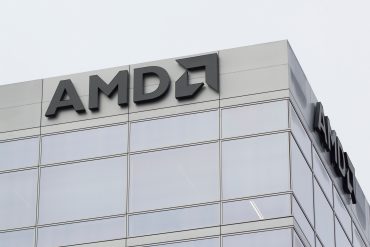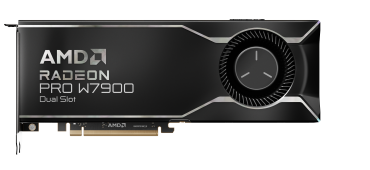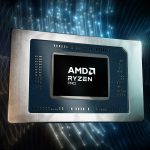
- Data Centers
- Earnings Season
- Semiconductors
- Stock Market
AMD Surges as AI Chip Boom Lifts $26B Revenue, Cloud Growth
5 minute read

AI chipmaker AMD expands data center market share as enterprise customers seek alternatives to Nvidia’s premium processors
Key Takeaways
- AMD stock surges 125% in four months from $80 to approximately $180 per share, driven by artificial intelligence market growth and data center demand.
- Revenue growth accelerates to 31% annually with AMD’s revenues expanding from $6.7 billion in 2019 to $26 billion in 2024, positioning for potential $58.3 billion by 2027.
- Data center segment jumps 57% year-over-year in Q1 2025, fueled by increased sales of EPYC CPUs and Instinct GPUs for AI workloads.
Introduction
Advanced Micro Devices stock has captured investor attention with its remarkable 125% surge over four months, climbing from $80 to nearly $180 per share. The semiconductor company trades at 45 times projected 2025 earnings, a valuation that reflects growing confidence in its artificial intelligence and data center opportunities.
AMD’s transformation from a struggling chip maker to an AI infrastructure player represents one of the technology sector’s most compelling turnaround stories. The company now competes directly with Nvidia and Intel across multiple high-growth segments, from gaming processors to enterprise data centers.

Key Developments
AMD’s product portfolio expansion has accelerated significantly this year. The company’s Ryzen and EPYC processors continue gaining market share against competitors, while its MI350 GPU lineup offers substantial performance improvements over previous generations.
Strategic partnerships have strengthened AMD’s market position. Oracle recently selected AMD for high-intensity AI workloads, demonstrating the company’s competitive edge in cost-effective solutions. These wins validate AMD’s strategy of positioning itself as the value alternative to Nvidia’s premium offerings.
The company has enhanced its software capabilities through investments in its open-source ROCm platform. This initiative directly challenges Nvidia’s proprietary CUDA ecosystem, potentially reducing customer switching costs and improving AMD’s competitive positioning in AI workloads.
Market Impact
AMD’s stock performance reflects broader investor enthusiasm for AI infrastructure companies. The semiconductor sector has experienced significant volatility, but AMD maintains investor confidence through consistent execution and market share gains.
Analyst sentiment shows cautious optimism with 28 buy or strong buy ratings among 39 analysts covering the stock. However, the average price target remains well below the $330 level discussed by some observers, indicating that such projections represent the optimistic end of expectations.
The AI accelerator chip market presents substantial opportunity, with projections reaching $400 billion by 2027. AMD’s positioning in this expanding market has driven much of its recent stock appreciation and investor interest.
Strategic Insights
AMD benefits from diversification across multiple growth segments including data centers, gaming, and embedded systems. This portfolio approach helps mitigate risks associated with cyclical demand in any single market while capturing growth across computing categories.
Forbes analysis suggests potential for 35% average annual revenue growth over the next two years. Such expansion would require continued execution across product development, manufacturing partnerships, and customer acquisition.
The company’s margin expansion story remains compelling. Adjusted net margins improved from 11% in 2019 to over 21% in 2024, driven by economies of scale and a more favorable product mix toward higher-value processors and graphics cards.

Expert Opinions and Data
HSBC projects AMD’s AI-related sales could exceed $15 billion by 2026, representing significant growth from the current $5 billion baseline. This forecast assumes continued market share gains in the rapidly expanding AI infrastructure segment.
Industry analysts highlight AMD’s favorable price-performance ratio compared to Nvidia’s offerings. Despite recent price increases for the MI350 GPU, AMD maintains competitive positioning for customers seeking cost-effective AI solutions without sacrificing performance.
Financial projections suggest potential for 25% net margins if GPU sales continue expanding. Combined with revenue growth, this margin expansion could drive earnings to $14.5 billion, representing a 2.7 times increase from 2024 levels.
Conclusion
AMD’s fundamental transformation into an AI infrastructure company has generated substantial investor returns and positioned the company for continued growth. The combination of product innovation, market expansion, and improving profitability creates a compelling investment narrative.
While aggressive price targets reflect optimism about AMD’s trajectory, investors must weigh growth potential against execution risks and competitive pressures. The company’s diversified portfolio and strengthening market position provide multiple paths for sustained value creation in the expanding semiconductor market.








